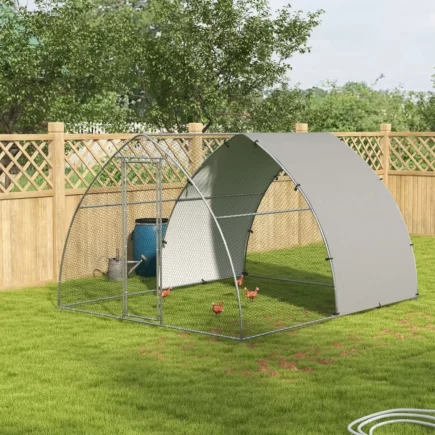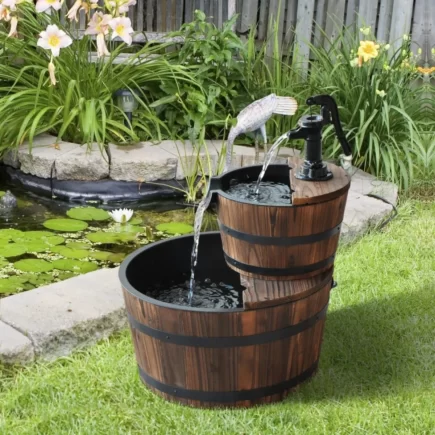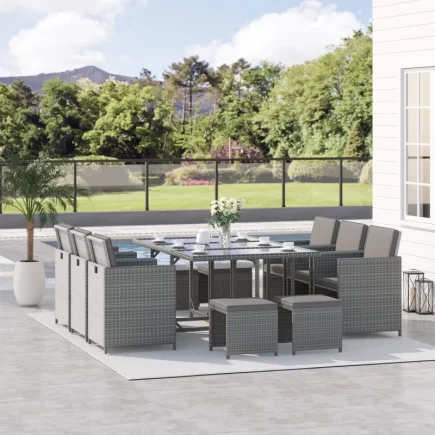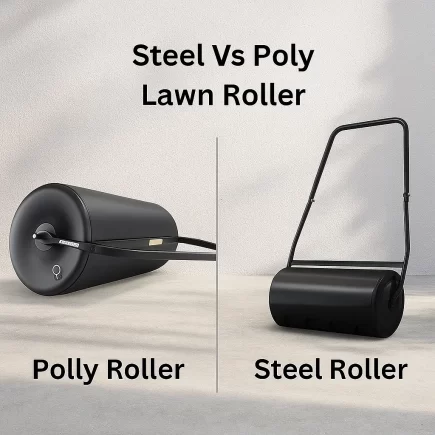Air fryers have transformed modern kitchens, becoming one of the most popular appliances for quick, healthier cooking. Unlike traditional deep fryers, they use rapid hot air circulation to create crispy textures with little to no oil. From French fries to chicken wings, roasted veggies to baked goods, air fryers make everyday meals faster, lighter, and easier.

With so many types on the market, basket, oven-style, compact, smart, and more, choosing the right one can feel overwhelming. The best air fryer depends not only on cooking performance but also on size, features, cleaning convenience, and how well it fits your lifestyle. This guide breaks down the best types of air fryers, highlighting key features, pros, cons, and real examples from the HOMCOM product line to help you pick the perfect model.
Types of Air Fryers
Air fryers aren’t one-size-fits-all. They come in a variety of shapes, sizes, and designs to match different cooking needs and kitchen spaces. Some are compact and simple, while others are larger with more advanced functions. Below are the most common types, with a closer look at their features and benefits to help you decide which one fits your lifestyle best.
1. Basket-Style Air Fryers
Basket-style air fryers are the original and most common design. They resemble a small countertop appliance with a pull-out basket where food is placed.

Key Features
- Pull-out drawer with nonstick basket
- Circulates hot air around food for even crisping
- Compact design suitable for most kitchens
- Available in small to medium capacities (2–6 quarts)
Pros
- Simple to use with straightforward controls
- Excellent for making fries, nuggets, wings, and snacks
- Heats up quickly, reducing cooking time
- Typically more affordable than other styles
- Easy to store due to smaller footprint
Cons
- Limited cooking space, not ideal for large families
- Cannot cook multiple dishes at once
- May require shaking or stirring food mid-cycle
Example: HOMCOM 4.7Qt Air Fryer, 4-in-1 Digital Hot Oven
A great example of a basket-style model is the HOMCOM 4.7Qt Air Fryer. With 8 preset cooking menus (steak, shrimp, fries, veggies, and more) and a digital touchscreen, it’s user-friendly and versatile. Its 4.7-quart capacity makes it a perfect mid-size choice for couples or small families.

- Pros: Multifunctional (air fry, bake, broil, roast), compact design, BPA-free nonstick basket, safety shut-off.
- Cons: Not large enough for very big meals, requires occasional basket shaking.
2. Dual-Basket Air Fryers
Dual-basket models allow you to cook two different foods at the same time with separate controls.

Key Features
- Two independent baskets (usually 4–6 quarts each)
- Separate temperature and timer controls
- Can sync finish times so both dishes are ready together
Pros
- Cook protein in one basket and veggies in the other
- Saves time and prevents flavor mixing
- Great for meal prepping or family dinners
- Eliminates the need for multiple cooking cycles
Cons
- Larger and bulkier than single-basket models
- Typically more expensive
- May not be necessary for smaller households
3. Compact / Mini Air Fryers
Perfect for singles, college students, or those with very limited counter space, these are small-scale versions of standard air fryers.

Key Features
- Small capacity (1–2 quarts)
- Very lightweight and portable
- Simple controls with dial or button timers
Pros
- Takes up very little space
- Affordable and beginner-friendly
- Ideal for snacks, reheating, or small servings
- Energy-efficient for quick cooking
Cons
- Cannot cook full meals or larger items
- Limited in functionality compared to bigger models
- Better suited for one person than multiple users
4. Large-Capacity / XL Family Air Fryers
Designed for households that cook in bulk, XL air fryers handle big portions with ease.
Key Features
- 6–10+ quart capacity
- Fits whole chickens, large batches of fries, or family-style meals
- May include multiple racks or expanded baskets

Pros
- Ideal for families of 4+ people
- Saves cooking time by making large portions at once
- Reduces the need for multiple cooking batches
- Often includes versatile functions for roasting and baking
Cons
- Requires significant counter or storage space
- More expensive than smaller models
- May consume more power
Example: HOMCOM 6.9Qt Digital Air Fryer Oven
For large households, the HOMCOM 6.9Qt 1700W Air Fryer offers the right balance of size and versatility. It has 8 cooking presets, a wide temperature range (170–400°F), and a generous capacity suitable for family meals.

- Pros: Big enough for family dinners, LED digital screen, nonstick basket, overheat protection.
- Cons: Bulkier, needs cooling before cleaning.
5. Oven-Style Air Fryers
These resemble countertop toaster ovens but come with air-frying technology. They often have multiple racks and doors that open like a traditional oven.

Key Features
- Larger capacity (10–25 quarts)
- Multiple cooking functions: baking, roasting, toasting, broiling
- Transparent door for monitoring food
- Often includes racks, rotisserie, or pizza settings
Pros
- Can cook larger meals or multiple trays at once
- Great for families or frequent entertainers
- More versatile with extra cooking functions
- Spacious interior fits full chicken or pizza
Cons
- Takes up more counter space
- Generally more expensive
- May take longer to preheat than basket models
Example: HOMCOM 21QT Air Fryer Toaster Oven, 7-in-1 Convection
If you want the power of an oven-style fryer, the HOMCOM 21QT 7-in-1 Toaster Oven is a standout. With seven cooking modes (air fry, bake, toast, broil, warm, convection bake, and convection broil) and a large 21-quart capacity, it’s perfect for families. It can handle a 9″ pizza or four slices of toast at once.

- Pros: Multiple cooking modes, large interior, includes fry basket, oven rack, and baking tray, adjustable temp (200–450°F).
- Cons: Larger footprint, heavier than basket fryers.
6. Paddle-Type (Self-Stirring) Air Fryers
This style features a built-in paddle that automatically stirs food for even cooking, reducing manual effort.
Key Features
- Stirring paddle rotates food during cooking
- Great for fries, stir-fries, and coated snacks
- Medium-sized capacity (3–5 quarts)

Pros
- Hands-free cooking, no need to shake or stir
- Ensures even browning and crispiness
- Unique design compared to standard models
Cons
- Bulkier and pricier than basket models
- Limited availability in the U.S.
- Not as versatile for larger cuts of meat
7. Smart Air Fryers (Wi-Fi & App Control)
Smart air fryers come equipped with Wi-Fi or Bluetooth, allowing app control or even voice activation.
Key Features
- Wi-Fi or app-enabled with cooking presets
- Compatible with smart assistants like Alexa or Google Home
- Real-time notifications and recipe integration

Pros
- Convenient remote control via phone
- Access to guided recipes and preset programs
- Great for tech-savvy users who love automation
Cons
- More expensive than standard models
- Extra features may not appeal to everyone
- Requires Wi-Fi connectivity for smart functions
8. Multi-Cooker Air Fryers (Pressure Cooker + Air Fryer)
These combine multiple cooking methods in one device, often including pressure cooking, slow cooking, and air frying.

Key Features
- Multiple cooking modes in one appliance
- Large capacity for family meals
- Air fryer lid attachment or built-in system
Pros
- Saves space by combining appliances
- Extremely versatile (pressure cook, sauté, steam, air fry)
- Ideal for meal prep and diverse cooking style.
Cons
- Expensive compared to single-function fryers
- Bulkier and heavier, takes up storage space
- Steeper learning curve for beginners
The best Air Fryer is the one that fits your cooking needs and lifestyle. Compact basket-style fryers are great for singles or small households, while larger oven-style or XL models work well for families and those who love entertaining. Smart and multi-cooker options add extra versatility if you want more than just frying. By focusing on size, features, and ease of cleaning, you can confidently choose the type of air fryer that makes everyday cooking healthier, faster, and more enjoyable.
FAQs
1. Do air fryers make food taste the same as deep frying?
Air fryers mimic that golden crunch, but the flavor is a bit lighter since they use far less oil. You still get crispy, delicious results, just without the heavy greasiness of deep frying.
2. Can an air fryer replace a microwave?
Not entirely. Air fryers are perfect for crisping, roasting, and reheating leftovers with texture, but microwaves are better for quickly warming soups, sauces, or other liquids.
3. Can you cook frozen foods directly in an air fryer?
Yes, you can toss frozen fries, nuggets, or fish sticks straight into the basket. The hot air circulation crisps them up quickly without thawing, making it faster and more convenient than using an oven.
4. How do you prevent food from sticking in the basket?
A quick spray of cooking oil or using parchment liners designed for air fryers does the trick. This keeps food from sticking and makes cleanup a whole lot easier.





























